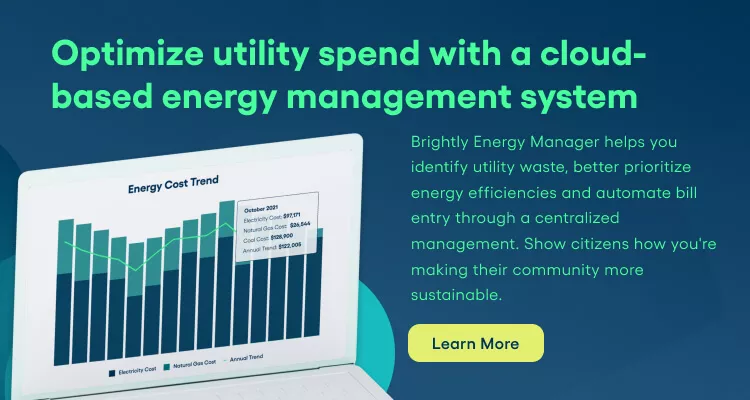Energy Management Systems: Why Are Hospitals Moving to Them?
3 top reasons why hospitals across the country are moving to energy management systems to be more efficient
Energy saving, going green, utility savings and energy management software are all terms that are increasingly becoming a part of the conversation when it comes to healthcare operations.
Especially for hospitals, which are one of the larger users of energy." According to the American Society of Heating, Refrigerating, and Air-Conditioning Engineers (ASHRAE), the average hospital uses 2.5 times the amount of energy compared to other commercial buildings," Energy Manager Today writes.
This comes as no surprise when you think about the 24/7 services these community centers promote, as well as the type of utilities, technology and systems that must keep running at all costs (not to mention the back-up systems in case anything fails). And with the competitive and often complex nature of healthcare, there isn't a hospital out there not looking for ways to save money and resources.
Thankfully, energy management and energy management systems (or EMSs) can fit perfectly into this landscape. Within energy management (the process of monitoring, controlling and conserving energy), healthcare operations professionals can not only find easier ways to increase efficiency but also save costs and critical resources at the same time.
Energy Manager Today confirms by stating, "The ability to modulate airflow, lighting, and administrative operations such as scheduling can generate significant cost savings annually."
It's evident that more operations departments are getting on board with energy management systems, as the global revenue for energy management systems is expected to grow from $948.8 million in 2015 to $2,205.6 million by 2024, according to Navigant.
So, what are the main draws and benefits for hospitals to start managing energy smarter now?
1. There's plenty of energy to save
According to the Premier Safety Institute, healthcare ranks as the country’s second most energy-intensive industry, with hospitals spending more than $10 billion on energy-related costs each year.
Not only are hospitals big users of energy, but within the same vein, there's greater opportunity for conservation. Utilities and energy are quickly becoming one of the top line items where executives, the C-suite and therefore operations professionals are looking to shave off some numbers.
"Rising energy costs and general budget constraints in the wake of the 2008 financial crisis and new cost pressures associated with the industry restructuring of ObamaCare have led healthcare facilities managers to seek mechanisms to reduce spending," according to Energy Manager Today.
Add to this the lack of time and resources and an energy management system is almost necessary to organize and maximize energy conservation projects within a hospital.
2. Hospitals have to stay competitive and efficient
With so many more choices in healthcare, the quality of your facilities has a great impact in the reputation and reviews of your hospital – which can greatly affect your visitors and revenue.
Energy Manager Today says, "Competitive pressure between facilities has affected the uptake of EMSs in hospitals. This competition is twofold: both a general trend toward facility consolidation and competition to retain patients and provide the greatest level of occupant satisfaction."
To create the best patient experience, you need to maximize each of your resources. This means everything from efficient heating and cooling to automation for utilities to taking advantage of LED lighting.
An energy management software system can empower hospitals to:
- Monitor utility use
- Uncover billing errors
- Sync with ENERGY STAR®
- Create and track energy conservation efforts
- Report energy savings
Each of these points lead back to operating more efficiently, cutting costs and maximizing resources from assets to staff.
3. Opportunity to improve emergency and disaster preparedness
After recent events like Hurricane Katrina and Hurricane Sandy, regulating bodies have recently created more codes and regulations around emergency and disaster preparedness. These changes are aimed at helping hospitals be more prepared to deal with interruptions in electricity, heating and air, and other areas.
So, how does energy management connect to emergency preparedness?
With an energy management system at your side, you have a better handle on what is being used, when and for how long. This means that you can be more proactive about tracking utility use and preventing breakdowns or interruptions in service. Not to mention that an EMS can simplify your compliance reporting around energy use.
With better energy management practices implemented, hospitals can be more aware and resilient when emergencies come. With a system, operations data goes from being contained on paper and in binders to living data that can inform split-second decisions.
Click here to read our 3-part blog series on preparedness in energy management.
You can't save what you don't see
If it's true you can't manage what you don't measure, then it's safe to say that you can't save what you don't see.
Hospitals and hospital systems of all sizes are discovering the many merits of energy management systems to help increase their awareness of utility use and save in more meaningful ways. This pays off when it comes to budgeting, operational efficiency, safety and ultimately patient care and experience.
Schedule a demo today to see our energy management software for hospitals in action or check out our Operating Efficiently Guide.



